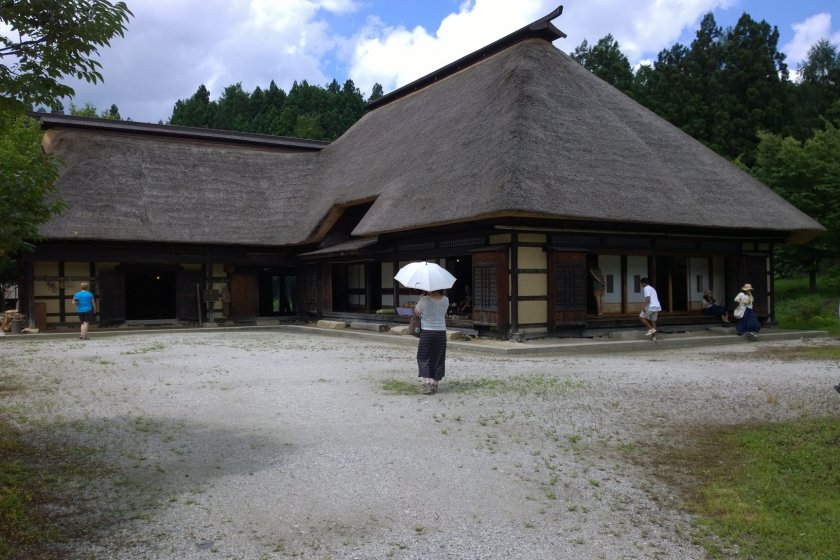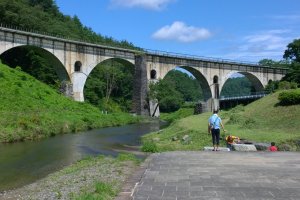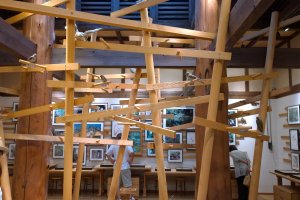Tono is of my favorite places to go in Iwate. I often go there by bicycle from Hanamaki, round trip around 100 kilometers. The route there is quite scenic and every time I get there I feel like I'm back in British Columbia, the scenery is so similar. This year, I had family visit from Canada, obviously it was the first place that I took them to visit.
Tono is a little town in Iwate about halfway between Hanamaki, in the interior, and Kamaishi on the coast. Because of its location, in ancient times it was hard to reach by foot and life was quite hard especially in winter. Although it isn't very big, it has a very rich history. It is said that Tono is a good place to be from! Many scary stories were set in that place and a few famous writers wrote stories about that place, the most famous being Tono Monogatari (The Legends of Tono) by Kunio Yanagita.
The place is also often used in movies; they actually have a traditional village still standing, more on this later. It claims to be the origin or birth place of Kappa, a mythical water creature resembling a frog and monkey crossed, that is said to be very vicious but has a great weakness. Its power comes from a bowl-shaped head filled with liquid. Should you meet one while walking about, all you have to do is bow and it will respond in kind thereby spilling the liquid from its bowl and losing its strength.
It's a very nice place to visit. On that day when I took the pictures, we first stopped in Miyamori, now part of Tono, at the rest area to stretch a little and enjoy the sight of Megane-bashi, or glasses bridge in English. Personally it reminds me of arch bridges in Southern France or Northern Italy. I always make another stop at Kaze-no-oka, a kind of farmer's market with a few restaurants, where you can buy local fruit and vegetables as well as local arts and crafts. We enjoyed some ice cream and other snacks. From the back patio we enjoyed a panoramic view of the valley, and we watched the wind make waves in the green rice fields. Kaze-no-oka means windy hill, in fact, the wind broke the wind turbine twice in the last few years. Next, we headed to Furusato-mura, a traditional village with L-shaped houses called Magariya houses. In old times they used to keep the horses in the same building as people, and they still have several of those houses standing. It looks like some people are still living there in the same fashion as they did in old times; they still engage in farming the traditional way. You can watch them plant rice in early May and harvest it in early to mid October.
Another part of the history in Tono and many small villages is that in old times old people were considered a burden to the village since they couldn't help with farming anymore and consumed scarce resources. They built a small shelter in the mountains and in the fall they took the old people there, and if they survived the winter they were allowed to reenter the community. This tradition was depicted in the movie "The ballad of Narayama". There was also a Kabuki play in 1958 about this tradition. Life was quite hard in those days.
Last but not least Tono is renowned for lamb. There are some restaurants specializing in lamb dishes and you can also buy it at several stores. Hope you enjoy it!



































